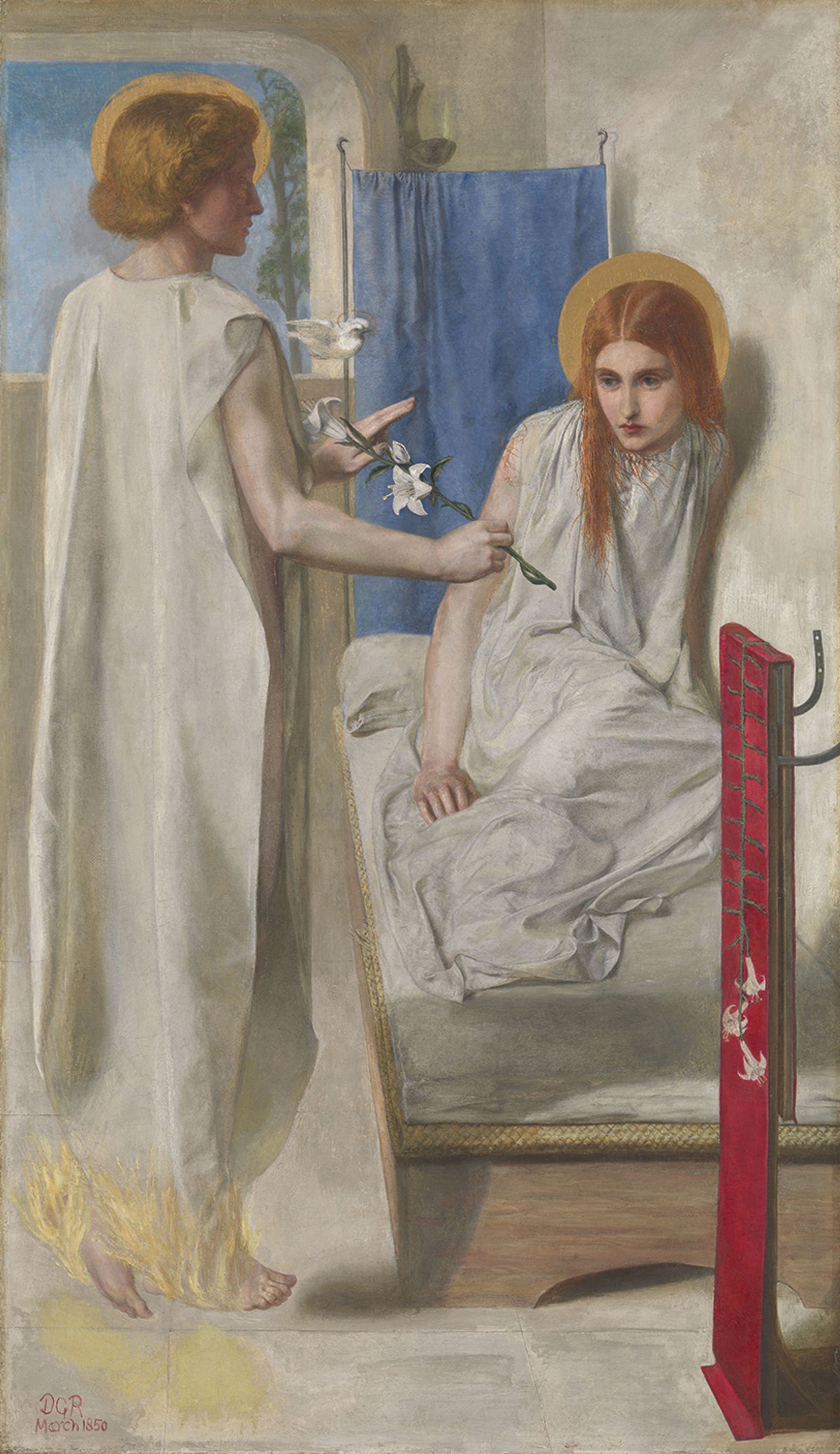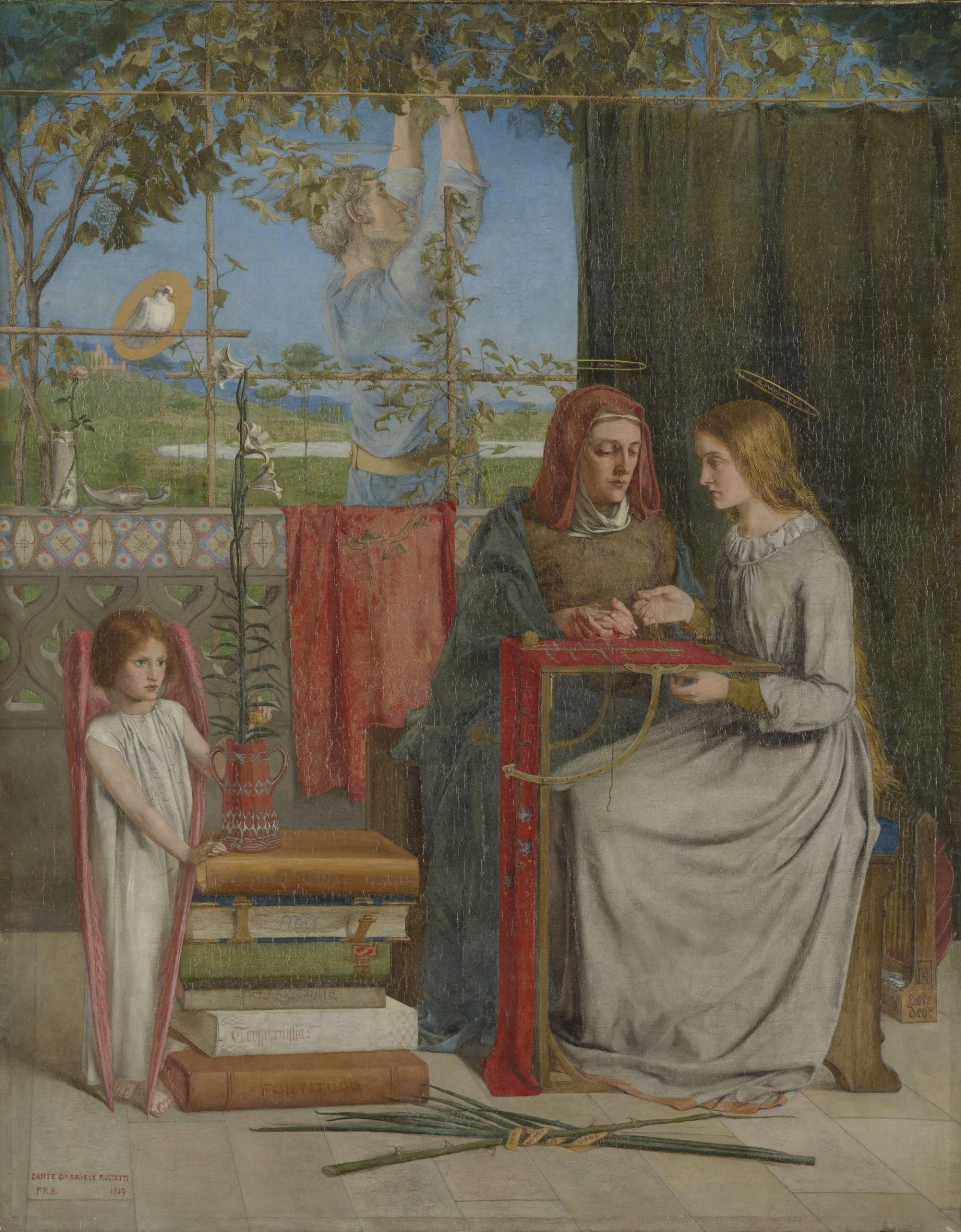“The main ambition of the show is to reveal these artists to a 21st-century audience, and look at them through 21st-century eyes,” says Carol Jacobi, the curator of the upcoming Tate Britain exhibition The Rossettis. “There are an awful lot of myths that have entangled themselves around the Rossettis, but we want to show them in a new light. There’s so much that is human and engaging about the work, and still very relevant today.”
The Tate’s show is—surprisingly for an institution so connected to exhibiting the Pre-Raphaelite Brotherhood—its first to focus on Dante Gabriel Rossetti, arguably the most popular and significant British painter of the mid-Victorian period. But it also seeks to establish the network of talent he associated with: principally, his sister Christina, one of the 19th century’s most successful poets; his brother William Michael, a critic and editor who outlined the Brotherhood’s core principles; and Elizabeth Siddal, initially well known as a model for some of Rossetti’s most sublime pictures, but increasingly gaining recognition as an influential artist in her own right.

Dante Gabriel Rossetti’s Ecce Ancilla Domini (The Annunciation) (1849-50), featuring Christina Rossetti © Tate
Although the Pre-Raphaelites have never really lost their popularity, it is fair to say the shadow of their dramatic personal lives and obsessive focus (at least in Dante Gabriel’s work) on the idealised female form has meant serious critical attention has drifted elsewhere. Jacobi says that the group’s preoccupations are resonant for contemporary audiences. “All of them—including the men—were defined by the gender roles of the day; we may think we’ve moved on from that but the fact is, it’s not as much as we’d like to. That defiance [of traditional gender roles], and the inventive ways they found to get around them, is exciting to explore.”
Jacobi points to Siddal’s experience—one of a group of working-class women hired by Dante Gabriel as models—as being central. “Her art was much more pithy and earthy and in touch with the physical realities of life than we might expect,” she says. “Some of the stories that she chose to illustrate were very daring.” Jacobi highlights the room in the show on Siddal and Dante Gabriel’s mutual influence, working side by side in the immediate aftermath of the Pre-Raphaelite flowering, in a “call and response” creativity. “Together they created this amazing body of work, small medieval fantasy worlds where they were exploring daring questions of love,” she says.

The Girlhood of Mary Virgin (1848-49) by Dante Gabriel Rossetti © Tate
One of the challenges of the show is showing Christina’s verse, Jacobi says. The Tate has opted to create a “forest of poems”, including readings by the actor Diana Quick, and show work that highlights issues of class and gender. Her most famous poem, Goblin Market, evolved from her volunteer work at a refuge for former prostitutes. Christina (also the model for her brother’s paintings The Girlhood of Mary Virgin and Ecce Ancilla Domini (The Annunciation), both 1849-50) interrogates, in Jacobi’s view, themes of “love in the material age, the Victorian idea of the ‘fallen woman’ and the buying and selling of sex”. Siddal, likewise, produced the drawing Pippa Passes (1854), which, Jacobi says, “looks at the experience of walking through the street and encounters with women that were selling sex”, alongside Dante Gabriel’s picture, Found (1854), on a similar theme.
“The stories they are telling are very human ones about love and relationships—not just romantic relationships but between children and parents, between siblings, between friends, fallings out, and how to carry on after loss,” Jacobi says.
• The Rossettis, Tate Britain, London, 6 April-24 September


